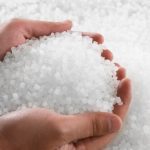Does ‘upcycling’ actually exist?
 Every time I hear or read a reference to ‘upcycling’, my instinctive response is “Really?” The word is often used by chi-chi second hand furniture shops when they have re-upholstered an old chaise longe with a pop-art fabric. OK, I can see how that is ‘upcycling’ in terms of perceived value to the consumer, but from an ecological point of view is it really better than reselling it with the fabric it originally had or replacing it like for like? Debatable.
Every time I hear or read a reference to ‘upcycling’, my instinctive response is “Really?” The word is often used by chi-chi second hand furniture shops when they have re-upholstered an old chaise longe with a pop-art fabric. OK, I can see how that is ‘upcycling’ in terms of perceived value to the consumer, but from an ecological point of view is it really better than reselling it with the fabric it originally had or replacing it like for like? Debatable.
And the other day, the Guardian ran a story about the use of GM organisms to ‘upcycle’ old plastic bottles into vanilla food flavouring of all things. My circular economy reflex immediately said “But where are you going to get the next generation of plastic bottles from then?”
This reflex was first inspired by Dr Dermot Roddy who 15-20 years ago ran a eco-industry development project called Renew Tees Valley. Dermot had previously worked on a polyethylene manufacturing plant and he once gently upbraided me for suggesting that use of post-consumer plastic bottles to make fleece jackets was a form of upcycling. Like many, back then I saw plastic bottles as a bad thing, and clothing as a good thing, but Dermot said “Do you know how much effort we put into maintaining the quality of food grade plastics and you want to make fleeces out of them when, frankly, you could use any old crap for that?”
Production of materials tends to be the dirtiest stage of any product life cycle. Therefore the biggest benefit of recycling is not avoiding materials going to landfill (or worse), but avoiding production of virgin materials in the next iteration of the loop. It therefore follows that the best use of old plastic bottles is to make new plastic bottles – if you make vanilla extract from plastic bottles, then you will need to make virgin plastic to manufacture the next generation of bottles. So why call this upcycling?
Which begs the question: does upcycling exist at all, in a practical ecological sense? Downcycling definitely does – like bollards and garden furniture made out of mixed food grade plastic waste, or, as Dermot would say, fleeces made out of plastic bottles. You could argue that upcycling processes could be developed to reverse downcycling, but given the difficulty of separating compound materials, it is almost certainly more sensible, ecologically and financially, to simply avoid downcycling in the first instance.
The more I think about it, the more I think upcycling is a unicorn.

